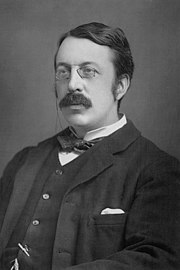
The master of this motet, “Beati Quorum Via,” was Charles V. Stanford, an Irishman who lived from 1852-1924 and who had an extremely distinguished career as a composer, teacher, and conductor. Out of the extensive list of his accomplishments I’ll just mention that he was one of the founders of the Royal College of Music, which is still around today. He produced over 200 works, including symphonies and operas, but nowadays the performances of his works are limited to some of his church music and an iridescent, shimmering piece “The Blue Bird” which I’ve performed with my own choir. Head over to that post if you’d like to read about it.
Two interesting tidbits about Stanford’s productive years: 1) He really, really wanted to be recognized for his operas and wrote nine of them. Only one had any success to speak of, Shamus O’Brien, which premiered in 1896 and ran for 82 performances. But it was a comic opera, not at all what he’d been writing previously in the genre. Alas! And while that number of performances was pretty good, guess who his comic opera competition was? None other than Gilbert & Sullivan. (Arthur Sullivan was also Irish, by the way). So Stanford was probably never going to get much traction if he’d pursued that path. But his serious operas got basically no traction at all, with a review of one, Savonarola, calling the music “crushingly tiresome.” 2) He was known for his combative personality. Here’s a description from his time on the board of the Royal College:

